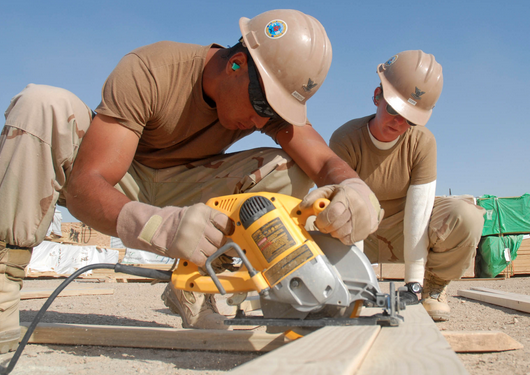Construction Spending Up 0.8 Percent in October
 Courtesy of AP: U.S. developers boosted construction spending in October at the fastest pace in more than four years, propelled by a surge in government projects. But spending on home construction and commercial projects both fell.
Courtesy of AP: U.S. developers boosted construction spending in October at the fastest pace in more than four years, propelled by a surge in government projects. But spending on home construction and commercial projects both fell.
Overall construction spending increased 0.8 percent in October to a seasonally adjusted annual rate of $908.4 billion, the Labor Department said Monday. That’s up from September, when spending fell 0.3 percent.
The October pace was the best since May 2009 and was driven by a 3.9 percent surge in public spending. Federal spending increased 10.9 percent, suggesting the 16-day partial government shutdown had little impact on public projects.
Spending on state and local government construction also rose.
One troubling sign: Home construction fell 0.6 percent in October from September, dragged lower by a drop in single-family homes.
But spending on home construction has surged 17.8 percent in the past 12 months, the fastest year-over-year pace since the peak of the 2008 financial crisis. And a recent jump in permits to build apartments indicates that will continue.
Deutsche Bank chief U.S. economist Joseph Lavorgna said that spending on single-family houses should rebound given plans by homebuilders to ramp up construction.
“The recent dip should reverse course given the ongoing improvement in permits for new construction,” Lavorgna said in a client note.
Nonresidential spending fell 0.5 percent in October from September, lowered by declines in the building of private power plants, communication facilities and amusement parks and recreation centers. Construction of office buildings, hotels and private schools all increased.
The decline in home construction in October may prove temporary. Permits issued to build apartments increased in October at their fastest pace in more than five years. But permits for single-family home construction rose only slightly and were at the same pace as in May.
Single-family houses make up roughly two-thirds of the residential construction market. The pace of homebuilding has rebounded from the depths of the recession. But sales of new single-family homes have grown more slowly, and higher mortgage rates could slow them further.
Both the October and September figures were released Monday, after reporting was delayed due to shutdown in October. The government also said spending in August and July were less than initially reported.
Mortgage rates are nearly a full percentage point higher than the spring. Rates rose in May when the Federal Reserve first signaled that it might slow its $85 billion in monthly bond purchases. But rates have moderated from recent highs after the Fed decided to keep its bond buying intact.
The average rate on a 30-year fixed mortgage was 4.29 percent, which is still close to historic lows.
Though new homes represent only a fraction of the housing market, they have an outsize impact on the economy. Each home built creates an average of three jobs for a year and generates about $90,000 in tax revenue, according to National Association of Home Builders.
Category: General Update










